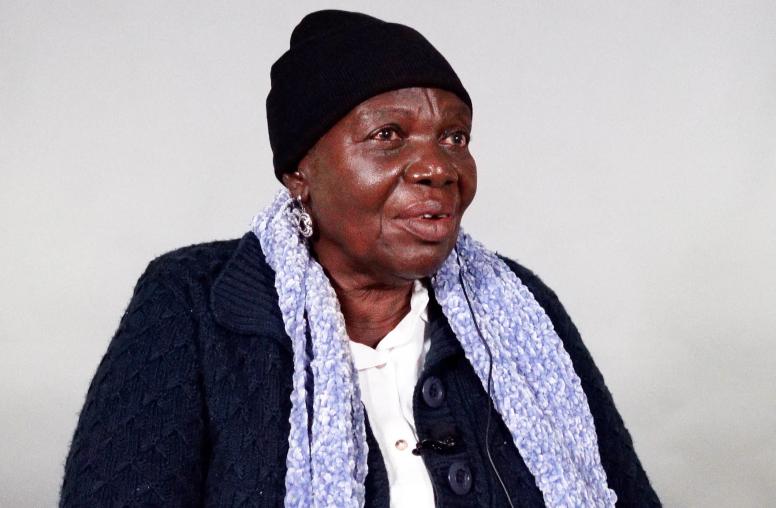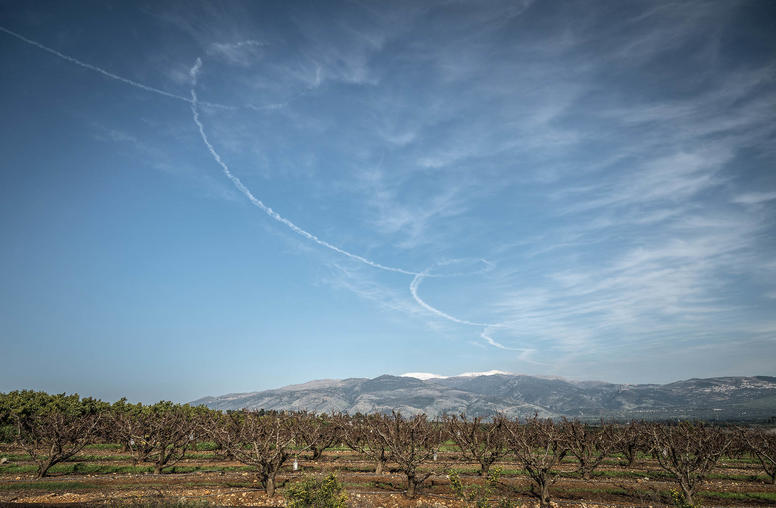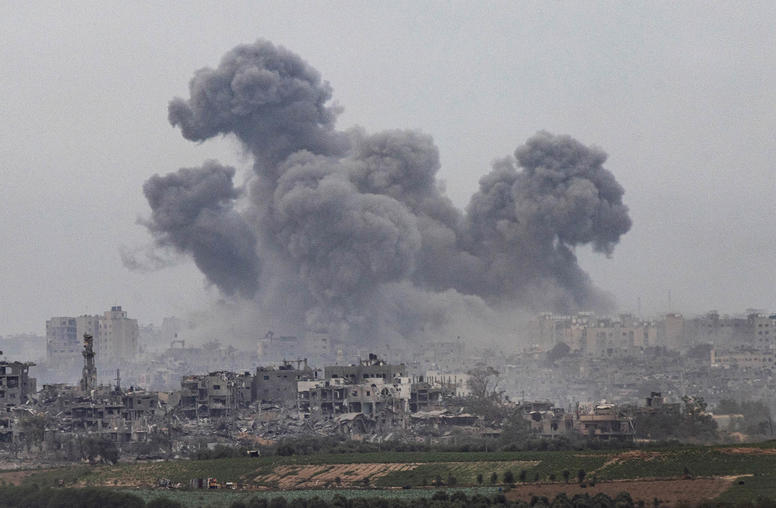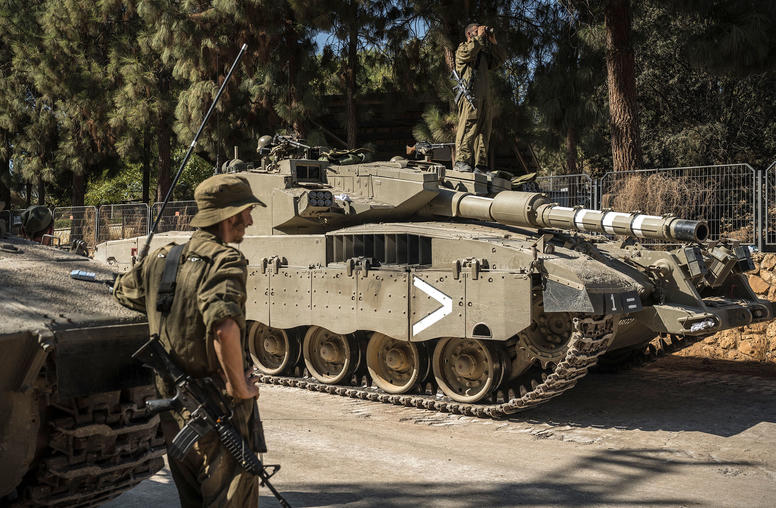Syria Study Group Final Report
The United States cannot avoid or ignore the conflict in Syria. From the outset of hostilities, minimizing American involvement in the war and safeguarding U.S. national security interests have proven to be incompatible goals. This will remain the case for the foreseeable future. The essential question before American policymakers is not whether the United States should keep or with- draw its forces in Syria, but what strategy and mix of tools will best protect the United States from the conflict’s reverberations and advance American interests. This report sets out such a strategy.

The U.S. Institute of Peace was mandated by Congress to facilitate the Syria Study Group based on USIP’s demonstrated expertise in convening Congressionally-directed study groups. Please note that the content of the report is solely that of the Syria Study Group and does not represent the views of USIP.
Executive Summary
The Syrian Conflict and American Interests
From the conflict’s beginning in 2011 as a peaceful domestic uprising, experts warned that President Bashar al-Assad’s brutal response was likely to have serious, negative impacts on U.S. interests. Given Syria’s central location in the Middle East, its ruling regime’s ties to terrorist groups and to Iran, and the incompatibility of Assad’s authoritarian rule with the aspirations of the Syrian people, many worried about the conflict spilling over Syria’s borders. These concerns are now a reality. The Syrian conflict spawned a refugee crisis that has encumbered Syria’s neighbors and roiled European politics, strained U.S.-Turkish relations to the point of crisis, led to direct hostilities between Iran and Israel, provided a vector for Russia’s resurgence in the Middle East, and challenged international norms around weapons of mass destruction and the protection of civilians. Areas of Syria have become safe havens for al-Qaeda and its fellow travelers and home to the largest concentration of foreign terrorist fighters since Afghanistan in the 1990s. The conflict also fueled the rise of ISIS, prompting an ongoing U.S.-led military intervention. Eight years in, the conflict has not been meaningfully contained, nor has the United States been sheltered from its effects.
Events on the ground disprove the narrative that the conflict has been won by the Assad regime. The Syrian war, far from ending, is entering a new phase. As of this writing, the Assad regime and its patron Russia are pressing an offensive against Idlib that could spur a new humanitarian catastrophe and outflow of refugees. Tensions are simmering between the Kurdish element that dominates the U.S.-trained Syrian Democratic Forces (SDF) in northeastern Syria and the Arab populace of some of the areas under SDF control. Turkey is positioning troops to invade northeastern Syria, which would divert the SDF away from the essential task of preventing ISIS’s resurgence. ISIS itself, down but not defeated, is already resurfacing as an insurgency and may yet attempt to retake territory in both Syria and Iraq. Iran and Israel, already locked in a low-level conflict in Syria, may escalate to open conflict, especially in the Golan Heights. The Assad regime and its partners may seek to cross the Euphrates River, which could in turn breathe life into the ISIS insurgency and allow Iran to consolidate its land routes from Iraq to Lebanon. All of these scenarios become more likely without U.S. forces in Syria and without committed U.S. leadership to avert these scenarios.
The Syria Study Group uncovered no easy solutions in Syria; optimal outcomes were left behind long ago. Yet the Group determined that the threats the conflict in Syria poses—of terrorism directed against the United States and its allies and partners; of an empowered Iran; of an aggrandized Russia; of large numbers of refugees, displaced persons, and other forms of humanitarian catastrophe; and of the erosion of international norms of war and the Western commitment to them—are sufficiently serious to merit a determined response from the United States. The United States and its allies retain tools to address those threats and the leverage to promote outcomes that are better for American interests than those that would prevail in the absence of U.S. engagement. Using those tools effectively, however, will require better alignment of ends and means—the former must be more realistic and the U.S. investment of the latter increased—as well as clear, consistent, and high-level political leadership. Sharp shifts and reversals in American policy, and the failure of senior U.S. government officials to prioritize the issue with their counterparts, have undermined American credibility and the effectiveness of U.S. policy.
Assessment of the Current Situation in Syria
While the conflict in Syria is often characterized as winding down, it is the assessment of the Syria Study Group that this is incorrect; in fact, the conflict remains dynamic and dangerous. In particular:
- The liberation of ISIS-held territory does not eliminate the group’s threat to the United States. ISIS no longer holds significant territory in Syria or Iraq, but it is not defeated. The group has morphed into an insurgency with the will, capability, and resources to carry out attacks against the United States. ISIS will seek to take advantage of any opening, whether a reduction in U.S. counterterrorism pressure or discontent among eastern Syria’s Arab population, to recruit new fighters and mount attacks. ISIS’s terrorist ideology, or “brand,” continues to hold global appeal.
- The ISIS detainee population is a long-term challenge that is not being adequately addressed. Although ISIS has suffered significant casualties, many of its fighters—including thousands of foreign fighters—remain in detention under SDF management. If released, they will form the core of a new iteration of ISIS or a similar group. In addition, tens of thousands of family members of ISIS fighters are residing in camps in eastern Syria. The SDF has custody of both groups but lacks the resources and outside support to hold them indefinitely. U.S. and allied efforts to deal with this problem have suffered from a lack of political will.
- Al-Qaeda and other terrorist groups remain active in Syria and threaten the United States. Although ISIS has received far more attention, other terrorist groups are active and control territory, especially in Idlib. Al-Qaeda offshoot Hayat Tahrir al-Sham has formed a government in Idlib, which is home to numerous other groups, including al-Qaeda’s Syrian affiliate, Hurras ad-Din, and a large number of foreign terrorist fighters. The United States lacks freedom of action to conduct a full-fledged counterterrorism campaign in these areas.
- Despite Israeli air strikes and U.S. sanctions, Iran continues to entrench itself in Syria; Russia and Iran show few serious signs of divergence. Iran appears to be pursuing a two-track policy of military entrenchment and political and economic activity designed to enhance its power and influence in Syria for the long term. Iran’s activities have reportedly caused discontent among Syria’s population, but the Assad regime is heavily dependent on Iranian support. Israeli officials believe that Israel’s air strikes have disrupted Iran’s attempts to move sophisticated weapons systems into Syria, but Iran’s overall objectives appear unchanged and the risk of broader Iran-Israel conflict remains high. Although Russia has acquiesced to the Israeli campaign against Iran, there are few signs of a wider divergence between Moscow and Tehran regarding aims or tactics in Syria.
- Assad has not won the conflict in Syria. The regime has recaptured large swaths of territory and now holds 60 percent of the country. However, its control outside Damascus is tenuous, in part because it lacks the forces to secure the areas it retakes, but also because it pursues punitive policies against local populations. In much of regime-held areas, civilians are subject to conscription as well as arbitrary arrest, torture, and execution at the hands of the regime. Crime and warlordism are rampant. The Assad regime is determined to retake Idlib and is receiving Russian assistance to do so, but so far it has struggled to recapture territory without the help of Iranian ground forces.
- Progress toward a political settlement to the Syria conflict has stalled, and Assad shows no willingness to compromise with his opponents. Neither the UN-led “Geneva process” based on UN Security Council Resolution 2254 nor the ad hoc “Astana process” comprising Russia, Iran, and Turkey has yielded progress toward a political settlement to the conflict. While the United States is leading a new effort to break the stalemate, the fundamental obstacle remains the Assad regime’s unwillingness to countenance meaningful reform. Presidential elections in 2021 are unlikely to produce a legitimate electoral outcome, because there is little chance that the regime will permit free and fair elections or the credible participation of the Syrian diaspora.
- The United States underestimated Russia’s ability to use Syria as an arena for regional influence. Russia’s intervention, beginning in 2015, accomplished its proximate aim—the preservation of the regime in defiance of U.S. calls for Assad to “go”—at a relatively low cost. Russia has enhanced its profile and prestige more broadly in the Middle East. The extent of Russia’s success in Syria is debatable—it has yet to translate Assad’s military gains into the political victory Moscow seemingly seeks—but Russia has nevertheless reestablished itself as a crucial player in the region’s politics for the first time in decades.
- U.S.-Turkey relations are strained in Syria by starkly diverging views of the SDF. A Turkish incursion into northeastern Syria would represent a major setback to U.S. aims in Syria and a new crisis for the U.S.-Turkish relationship. The United States regards its decision to partner with the SDF to fight ISIS as having been necessitated by the lack of a credible and timely Turkish alternative; Turkey regards the SDF as a grave security threat due to its links to the Kurdistan Workers’ Party (PKK), a threat made more dangerous by U.S. training and equipping of the SDF. This dispute has played a significant role in the erosion of U.S.-Turkish relations and may yet prompt a third Turkish incursion into Syria, which would severely complicate the U.S. military campaign against ISIS. There is little sign that Turkey intends to relinquish control of the two Syrian areas it currently controls— Afrin and the “Euphrates Shield” area.
- Although the SDF has been a highly effective partner in the fight against ISIS, it must undergo a transition to ensure stability in northeastern Syria. The SDF is regarded by the U.S. military as a highly effective partner in the conventional military campaign against ISIS. That partnership faces new challenges with the shift from fighting to governing. The SDF remains dominated by Syrian Kurds—specifically by the People’s Protection Units (YPG)—despite its control over large stretches of predominantly Arab territory. This disparity, and the YPG’s heavy-handed approach to governing and resource allocation, has led to unrest in Arab tribal areas. Minimal U.S. civilian engagement and the halt in U.S. stabilization funding in northeastern Syria have diminished American influence.
- The Assad regime’s systematic targeting of civilians and civilian infrastructure constitutes war crimes and demands accountability, as well as enhanced efforts to protect civilians. The Assad regime and its patrons, including Russia, have systematically targeted civilians and civilian infrastructure. A UN commission found the regime guilty of crimes against humanity. Syrians have been subjected to arbitrary detention, torture, and execution at the hands of the regime. Although prospects for accountability are dim in the near term, efforts to document the regime’s atrocities are under way.
- Syria’s humanitarian crisis, not least the challenges posed by internally displaced people and refugees, will reverberate for decades. Most refugees are unlikely to return voluntarily given current conditions in Syria. The Syrian conflict has provoked the most serious human displacement since World War II; 6 million Syrians are internally displaced, and nearly 6 million more are registered as refugees outside the country. Refugees have placed a heavy economic burden on host countries, especially Syria’s neighbors; pressure is increasing, particularly within Lebanon and Turkey, for nonvoluntary returns. Inside Syria, a large proportion of the population relies on humanitarian aid, over which the regime seeks to exercise control in order to enhance its power.
- Despite these challenges, the United States maintains leverage to shape an outcome in Syria that protects core U.S. national security interests. The Group identified several key points of leverage held by the United States, particularly if used in coordination with allies and partners: influence over northeastern Syria; sanctions against the Assad regime and its backers; the withholding of reconstruction assistance desired by Assad and Russia; and the ongoing diplomatic isolation of the Assad regime.
Recommendations for U.S. Policy
Despite its daunting assessment of the situation in Syria, the Group believes that the United States is still able to exercise influence over the conflict’s trajectory, and that it must do so given the threats the conflict poses to American interests. The Group believes that the best end state in Syria is one in which a Syrian government is viewed as legitimate by its own population and has the will and capability to end Syria’s dependence on foreign forces and to prevent terrorist groups from thriving on Syrian territory. This in turn requires conditions in which Syrian citizens live free from fear of the Assad regime and of Russian, Iranian, and ISIS brutality and within an updated political and social compact based on decentralized governance and equitable resource allocation.
Recognizing that such an outcome is a distant prospect, the Group recommends a strategy that makes a negotiated political settlement in Syria more likely yet also allows the United States to defend its interests even if a political solution is not found. None of those consulted by the Group believe that withdrawing U.S. forces would make ISIS less likely to regroup, Iran less likely to entrench itself, or a negotiated settlement more likely. Although the U.S. military mission in Syria is often lumped together with the Iraq and Afghanistan missions in the “forever war” category, the Syria case offers a different—and far less costly—model. A small U.S. military footprint, supported by U.S. air power and other high-end capabilities, reinforced by a global coalition of like-minded allies and partners, rallied a local partner force many times its size to liberate territory from a terrorist group. What U.S. forces and their partners have gained in Syria should not be discarded with a premature withdrawal.
To that end, the Group recommends that the United States, working in concert with allies and partners, continue its military mission in order to maintain pressure on ISIS and other terrorist groups while maintaining and strengthening pressure on the Assad regime and its backers until conditions are conducive for a political settlement that ends the Syria war. In particular, the Group recommends that the United States:
- Halt the U.S. military withdrawal; consolidate gains following the territorial defeat of ISIS; and support communities liberated from ISIS in forming an alternative model for governance, resource allocation, and security in Syria. The Group recommends that the United States (1) update its military mission to head off an ISIS insurgency; (2) adequately prepare for various contingencies and escalation scenarios; (3) return a U.S. civilian presence and stabilization funding to northeastern Syria; (4) press the SDF to govern more inclusively; (5) elevate the ISIS detainee problem set; and (6) prioritize diplomatic and military engagement in Iraq.
- Until conditions inside Syria improve, deny the Assad regime and its backers all avenues for normalization by enforcing the regime’s diplomatic isolation and a rigorous sanctions architecture. Among other steps, the United States should continue to press allies and partners to refrain from reestablishing diplomatic ties with the Assad regime, to withhold reconstruction assistance, and to strictly enforce sanctions and seek to expand them. In addition, the international community should begin preparing the ground now for the eventual accountability of those responsible for war crimes in Syria, without imposing accountability as a precondition for a political settlement.
- Test and verify Russian willingness to support political settlements acceptable to the United States but continue activities that increase the costs to Russia for its actions in Syria. Many observers believe that agreement between the United States and Russia is a prerequisite for progress toward a political settlement, yet Russia has consistently failed to deliver on its commitments in Syria. The United States should require concrete actions of Russia pursuant to any discussions of a political settlement and, absent such actions, should avoid making concessions to Moscow or legitimizing its positions. Concurrently, the United States should pressure Moscow, in part by highlighting Russian complicity in war crimes.
- Remain focused on expelling Iranian forces and proxies from Syria but recognize that this is best accomplished in phases. The key near-term goal should be to prevent further entrenchment of Iran and its many partners and proxies while raising the cost to Iran for its actions in Syria. To this end, the United States should continue its support of Israeli air strikes; enforce sanctions aimed at undermining Iran’s ability to fund its proxies and partners in Syria, Lebanon, and Iraq; maintain the U.S. military presence at the al-Tanf military base; and support efforts to expose Iranian influence efforts in Syria. The United States should insist that any political settlement require the withdrawal of Iranian forces and proxies from Syria.
- Seek areas for cooperation with Turkey and address legitimate Turkish security concerns while pressing Turkey to avoid any incursion into northeastern Syria and to improve conditions in the Afrin and Euphrates Shield areas. U.S. efforts to reach agreement on a security zone or security mechanism along Turkey’s border with northeastern Syria should continue, and every attempt should be made to isolate Syria from other problems in the U.S.-Turkey relationship. The United States should encourage the resumption of Turkey-PKK peace talks, which hold the best possibility of leading to a détente between Turkey and the SDF. The United States should press Turkey to improve conditions and access in the areas of Syria it controls.
- Seek to avert a humanitarian catastrophe in Idlib while addressing the presence there of terrorist groups. The United States should explore avenues to increase the pressure on terrorist groups in Idlib that may be plotting external attacks. At the same time, the United States should seek to deter the Assad regime and its partners from continuing to target civilians in the territory. In preparation for a renewed humanitarian and refugee crisis in Idlib, the United States should press Turkey to facilitate the work of nongovernmental organizations (NGOs) serving the population.
- Energize efforts to address the humanitarian crisis inside Syria while taking steps to shore up countries hosting Syrian refugees. The United States should work to ensure the continued provision of humanitarian aid to vulnerable populations inside and outside Syria. The United States should press for the renewal of the UN “cross-border resolution,” rally other states to fund humanitarian appeals for Syria, and work with international financial institutions to support refugee-hosting countries. The United States should stand firmly against efforts to forcibly repatriate Syrian refugees and should resume accepting Syrian refugees in the United States.



